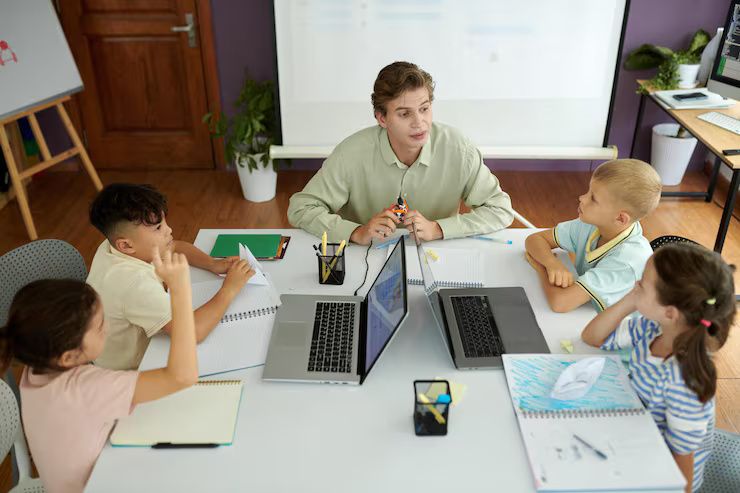Experiential learning is an educational approach where students learn by doing. Instead of focusing only on lectures and textbooks, this method emphasizes hands-on activities, real-world problem-solving, and reflection
Experiential learning has gained relevance in the 21st century, where employers and educators emphasize critical thinking, creativity, collaboration, and adaptability.

Who It Affects
-
Students – gain practical skills, deeper understanding, and confidence
-
Teachers – adopt innovative methods to engage learners
-
Employers – benefit from work-ready graduates with problem-solving abilities
-
Society – develops citizens with social responsibility and adaptability
Problems It Solves
-
Bridges the gap between theory and practice – ensuring knowledge is applied, not just memorized
-
Improves student engagement – active learning increases motivation
-
Prepares for careers – internships and projects foster real-world readiness
-
Enhances lifelong learning – students learn how to learn, not just what to learn
Recent Updates and Trends (2024–2025)
In the past year, experiential learning has gained more momentum globally due to changes in technology and education demands.
Key Trends (2024–2025)
-
Digital Simulations and VR Learning – Schools and universities are adopting virtual reality labs for science, medicine, and engineering practice.
-
Work-Integrated Learning (WIL) – Programs combining classroom education with internships are growing in countries like Canada, India, and Australia.
-
Project-Based Assessments – Education boards are shifting from exams to portfolio-based evaluations. For example, in 2024, CBSE (India) introduced more project-driven assessment options.
-
Global Partnerships – Universities collaborate with industries to design experiential curricula.
-
Focus on Sustainability & Social Impact – More experiential projects center on solving climate, health, and community issues.
Data Snapshot (2024)
| Method | Adoption Rate in Schools/Universities | Growth Trend |
|---|---|---|
| Project-Based Learning | 62% | Rising |
| Internships/Apprenticeships | 55% | Rising |
| Virtual Simulations | 40% | Rapid growth |
| Field-Based Learning | 48% | Stable |
Laws and Policies
Experiential learning is shaped by government programs, accreditation standards, and curriculum reforms.
-
United States – The Every Student Succeeds Act (ESSA) encourages schools to integrate applied learning methods. Universities often require internships for accreditation in fields like engineering and medicine.
-
European Union – EU’s Erasmus+ program funds international experiential learning opportunities, exchange projects, and skill development.
-
India – The National Education Policy (NEP) 2020 emphasizes experiential and skill-based learning from primary levels, promoting coding, projects, and vocational training.
-
Canada & Australia – Policies encourage work-integrated learning (WIL) as part of higher education.
-
Global Education Frameworks – UNESCO promotes experiential methods as essential to 21st-century skills education.
Tools and Resources for Experiential Learning
Educators, students, and institutions can leverage multiple tools and platforms:
Digital Platforms
-
Google Expeditions / VR in Education – immersive simulations for virtual field trips
-
Edmodo, Moodle, Canvas – platforms to manage project-based learning
-
Nearpod – interactive lessons with experiential components
Collaboration & Reflection Tools
-
Padlet – digital boards for reflection and project tracking
-
Trello / Asana – project management for group work
-
Flipgrid – student video reflections
Skill-Based Platforms
-
Coursera & edX – offer project-based and applied courses
-
Khan Academy Projects – hands-on math and science learning
Institutional Resources
-
University career centers – connect students to internships
-
Government education portals – provide vocational training programs
FAQs: Experiential Learning in Education
Q1: Is experiential learning suitable for all age groups?
Yes. Methods differ: younger children use play-based activities, while older students engage in projects, labs, and internships.
Q2: How is experiential learning assessed?
Through portfolios, presentations, reflective essays, peer evaluation, and project outcomes, not just exams.
Q3: Does experiential learning replace traditional teaching?
No. It complements classroom teaching by applying theory in real-life contexts.
Q4: What are common examples of experiential learning?
Internships, field trips, simulations, service learning, role-playing, and laboratory experiments.
Q5: Is technology necessary for experiential learning?
Not always. While VR and simulations enhance it, simple activities like debates, group projects, and community service also qualify.
Conclusion
Experiential learning is no longer an optional teaching method—it is becoming a core approach to modern education. By combining practice with theory, it equips learners with both knowledge and skills required for success in personal, academic, and professional settings.

